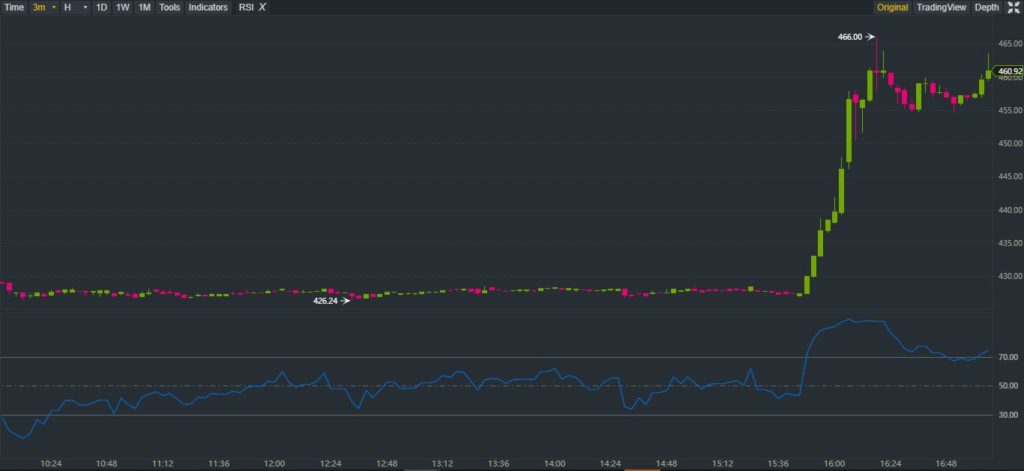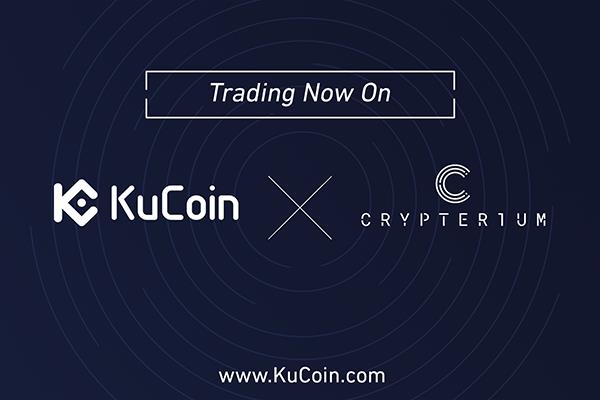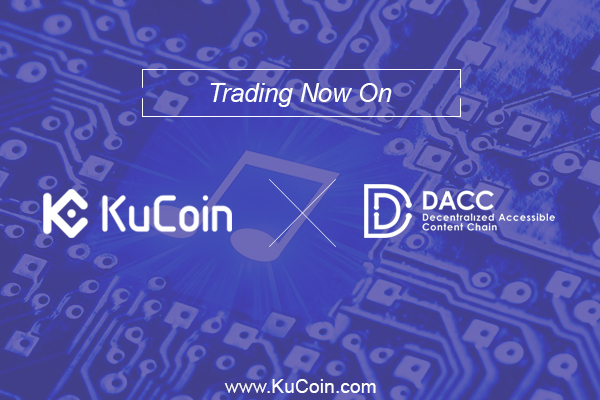2020-11-21 19:30 |
While the second iteration of Ethereum is becoming more tangible each day, some of the technical aspects of Eth 2.0 remain largely unknown. To bring the community up to date with what’s been accomplished and what’s yet to come, Vitalik Buterin, the founder of Ethereum, and some of the network’s lead developers took to Reddit to answer user questions.
The team didn’t hold back when it came to giving out their honest thoughts on the progress made with the development of Ethereum 2.0, revealing that some aspects of the network’s roadmap still require serious work. However, the takeaway from the AMA is that the team seems to have adopted a slow and steady approach to development and is looking both to de-risk and simplify each phase of the rollout.
Deconstructing the roadmap for Ethereum’s second iterationThe sheer size and market domination Ethereum has often tends to overshadow some of its more technical aspects. As the foundation of the blooming DeFi sector and the second-largest cryptocurrency by market cap, it certainly doesn’t get as much deep thought as some of the more novel projects do.
But now, with the network’s second iteration getting closer, diving deep into Ethereum seems to be more important than ever. It’s set to transition to a fully proof-of-stake system, completely run and governed by the community.
Ethereum 2.0 brought a fair share of controversy this year. The sheer size of Ethereum meant that any deviation from the original idea of Eth 2.0 and every missed deadline caused a frenzy both in the media and in the market. Looking to give some clarity into the process that is designing Ethereum 2.0 was the network’s main engineering team, led by Vitalik Buterin.
The team took to Reddit and held an almost two-hour-long, no-questions-bared AMA, where they touched both on the technical and the controversial topics surrounding Ethereum 2.0.
One of the most frequently asked questions, and the questions that got the most traction among the community, was about the Ethereum 2.0 roadmap. While most of the community seems to have been acquainted with the network’s more technical aspects, they lacked a clear understanding of its practical delivery.
With relatively high confidence, the team revealed that Ethereum 2.0 will be delivered in this order:
Phase 0 — Proof-of-stake Phase 0.5 — Light client Phase 1 — Data sharding Phase 1.5 — Merger Phase 2 — Enshrined VMPhase 0, according to Buterin, will most likely happen in 2021. Phase 1, however, could be delivered in 2021 only “in the best-case scenario.”
After much back and forth with the community, a member of the team noted that they were still experimenting with new names and terminology for the various phases of launch.
“After Phase 0, none of them are necessarily sequential,” they wrote, adding that using the term “docking” to describe Phase 1.5 provides a much better analogy of what the phase is about. Namely, the current Ethereum rocket powered by proof-of-work will eventually “dock” into the beacon chain, not literally merge with it.
Removing references to phase numbers will also help show that all of these phases aren’t necessarily sequential, but independent parallel work efforts.
“You can dock Eth1 to Eth2 before you add sharded data availability, and vice versa. The independence is allowing both of these efforts to be developed at the same time. We might even see an Eth1/Eth2 testnet in the relatively near future,” the team wrote on Reddit.
Analyzing the progress of each piece of Ethereum’s roadmapAnd while the first several answers that came from the team delivered rather formal information, as the AMA went on they began hitting some of the harder questions.
When asked whether there was any piece of the roadmap that they still had no idea how to do, the team gave out a rather somber answer.
From a research point of view, each order of delivery where concrete plans were laid out, which include phases 0, 1, and 2, are pretty much crystal clear to the developers. What they did note was that most of the problems they expect to encounter will come from the practical, or execution side of things. For Phase 1 that’s data availability and for Phase 2 stateless execution and using a new virtual machine (VM) like the eWASM. Zooming out of these relatively thought-out phases brings about the problem of quantum security, which the team believes is something that still needs a lot of research to make it both practical and performant.
Buterin said that the research was either done or at least low-risk on everything to data sharding and the Eth1/Eth2 merge.
“It’s mostly engineering and coordination now,” he explained.
However, he believes that Eth2 will eventually need a new enshrined VM to replace the EVM. And while he would like that the enshrined VM was a zkVM, i.e. a SNARK-friendly alternative to EVM, he noted that there were significant open problems at the intersection of research and engineering for an Eth2 zkVM.
Buterin’s ambitious VM ideas might not come to fruition, though.
A member of the team revealed that he wasn’t certain whether Ethereum WebAssembly (eWASM) will ever make it to the mainnet. While eWASM was always discussed in the realm of possibility, this is the first time someone from the close-knit circle of Ethereum’s research team has doubted its rollout. Danny Ryan, the core researcher at the Ethereum Foundation, said that the amount of existing contracts, tools, languages, and optimizations for the EVM is becoming “quite staggering.” As the EVM is becoming somewhat of a blockchain standard in and of itself, the promised efficiency gains of interpreted eWASM might be minimal on top of what they already have with the EVM. It also turned out that it was possible to implement many new things into the existing EVM.
It’s unclear if the layer of abstraction provided by the eWASM provides substantial value for the complexity cost and if it could be efficient and practical enough to write these environments in the eWASM/EVM in the first place.
Buterin echoed Ryan’s statement, saying that going from one virtual machine to two doubles the consensus complexity. Aside from that, he noted that the research team already has a lot on its plate and switching the VM has a far lower benefit than “pretty much any other piece of comparable difficulty in the proof-of-stake and sharding roadmap. Many of the benefits that were originally envisioned for the eWASM, such as near-native-speed execution that removes the need for precompilers, have also not transpired. In particular, it turned out that it was extremely hard to make compilers that are safe at runtime and safe on adversarial code at compilation time.
This, however, doesn’t mean that it’s the end of eWASM. Buterin said that it will primarily have a future as an execution engine inside rollups, as they can include any state transition function as long as they’re provided with a fraud prover. In the long-term, there is both a good momentum and good rationale to upgrade the EVM. Buterin explained that they want to enable ZK-SNARK VM execution, adding that WASM was far more efficient for this than the current EVM.
When it comes to other aspects of the roadmap, the team seemed much more optimistic. Research for data sharding is now essentially done and speccing is currently underway.
While there are engineering challenges with data availability sampling still to be solved, the team is confident on how to do simpler data sharding with committees only. Execution environments most likely won’t require too much work, as the team said that rollup VM is a good enough substitute for EEs both in the medium-term and in the long-term. Rollups, on the other hand, aren’t part of Eth2’s consensus, but are emergent pieces of the layer-2 infrastructure. Therefore, they’re largely out of the remit of both the Ethereum Foundation and any other research team focused on Eth2.
The research and speccing for light clients is also largely done—the team doesn’t expect any further problems with the matter as the implementation is relatively easy and won’t require any special effort.
A rough launch timeline, the introduction of testnets, wallets, and rollupsConcrete launch dates tend to be something that the crypto community is very passionate about, so it comes as no surprise that a significant number of questions directed at Ethereum’s research team were about the Eth2 launch timeline. While the scope of the work still needed to bring Eth2 live makes it very hard to set a date in stone, the fact that most of the phases are being worked on in parallel makes it almost impossible.
However, the team did do their best at estimating when most of the phases will roll out, revealing to the community that it will, quite literally, take years before Eth2 is fully done.
When asked whether there was a minimum runtime required for a phase before the following one is launched, Buterin said that there was a significant difference between the questions “what is the minimum runtime until sharding” and “what is the minimum runtime until the merge.” Both Buterin and Ryan said that sharding can be implemented as soon as it’s ready and reasonably stable, with both agreeing that it wouldn’t be good to wait too long to get it out.
Ryan said that the merge, or Phase 1.5, will require the beacon chain stable in production for at least 9 months. “We really need to vet the beacon chain in production for an extended period of time before we deem it stable and safe enough to be Ethereum’s new home,” he explained.
As far as the merge goes, Buterin was much more conservative in his estimate. He said that it was largely the community’s decision, not his or the Ethereum Foundation’s, which means that it’s a tougher decision that will take a lot more time. The broader Ethereum community, which includes the Eth1 core developers, block explorers, exchanges, and all other network participants, needs to be convinced that proof-of-stake has been sufficiently de-risked. Until most of them are convinced that it’s safe to make the full switch to Eth2 the merge won’t happen, he said.
According to Buterin, implementing the merge will require Phase 1 to run for at least a year:
“Even if a complete merge implementation fell out of the sky in February, I would recommend we sit on our butts until November or so to convince people that PoS is safe, so that people are comfortable with flipping the switch to let the entire $50B ecosystem really and truly become dependent on the beacon chain.”
The fact that deposits have so far been rather slow for Phase 0 can only prolong the rollout of Phase 1.5. According to many Redditors, most users are still a bit hesitant to deposit their funds and begin staking knowing that their funds will remain locked for an unknown period of time. However, the team said that they aren’t currently considering prioritizing the merge over sharding but are working on a bridge that will also take a bit of time to roll out.
The current separation of Eth1 and Eth2 comes with an equally long list of pros and cons, Buterin said, so there’s a trade-off to be made at each step. The large amount of value that’s exchanged and held on Eth1 memes that the network changes at a significantly slower rate than Eth2. Merging Eth1 with Eth2 quickly will encumber Eth2 with the development schedule of Eth1, which will dramatically slow down how quickly Eth2 can reach its final form.
On the other side, building a bridge also isn’t that straightforward of a process. There’s still a lot of development required before Eth1 is even ready to be connected to Eth2 via a bridge, Carl Beekhuizen explained. The Ethereum Foundation researcher explained that, at the very least, Eth1 nodes need to follow the finalized epochs from Eth2.
Completing any one of these things will open up a whole new world of possibilities for the network.
Buterin said he hopes once a testnet for Eth1 is established inside of Eth2, it can end up replacing some of the existing Ethereum testnets. This, he explained, would serve two purposes simultaneously—firstly, it would satisfy the growing need for an Ethereum testing environment. Secondly, it would enable the team to test many parts of the merge implementation with very low risk. He also said that the entire merge procedure could be performed on Ropsten or another testnet.
Once the merge is complete and Phase 1.5 matures, the question of sharding arises.
Buterin said that, in the long run, most of the ecosystem’s users will live on rollups. Even if the team was able to push the base chain up to 100 transactions per second, it would only enable around 3.1 billion transactions per year. No one from the Ethereum Foundation seems to believe that this will be enough to allow a global-scale audience to make too many transactions.
Having your entire presence on Ethereum inside of a rollup, however, would let you avoid high transaction fees and offer a lot more convenience than the shard. Buterin also noted that the majority of the AMM liquidity will live either at the Eth1.x base layer or inside a single rollup that gets a large DeFi network effect in itself.
For more information:
Read the latest ETH2 news Follow the latest price of Ethereum Learn more about the Ethereum foundation View all of the tokens on EthereumThe post Ethereum 2.0 Guide: Everything you need to know about ETH2 – launch phases, rewards, deposits, VMs, and testnets debunked appeared first on CryptoSlate.
origin »Ethereum (ETH) íà Currencies.ru
|
|














